Greetings people of Earth,
I have completed another guitar build. I call it Terrella.
Terrellas were little spherical lodestones used in early experiments with magnetism. The word means “little earth.” The electric guitar is like a “little earth,” connected to our “big earth” through the mysterious actions of magnetism, electricity and creativity.
This particular build is a prototype — a proof of concept, as it were. It is a seven-string multiscale and I plan to build a normal six-string version next. It took me forever to build (more than one hundred hours) because I tried a few new things. What follows are some reflections on this the first of what I hope will be many Terrellas.
Of the thirteen guitars I have built, I’ve only repeated the same body design once. That was for my friend Chris’ guitar. Its twin ended up with a nice fella out in California. Other than these guitars, I haven’t repeated a body design because I’ve yet to design one that I am enduringly satisfied with.
Until now.
I have definitely not reinvented the wheel here, but this Terrella design checks all the boxes for me in terms of balance, ergonomics and aesthetics. It is a design I expect to return to again and again. As Adrien Belew might say, “I do think it’s good!”
I painted the body, which is made from one piece of local salvaged elm, with linseed oil paint. I love its look, but I still have much to learn about applying it. I struggled with the edges, where the paint didn’t want to adhere. As a result, some spots along the edges of the body are bare wood. Oh well. You could say this guitar is a genuine relic, I guess. That’s ok…the linseed oil paint, traditionally used on churches and houses in Scandinavia, gives the guitar a vibe more akin to a rustic Nordic cottage than a fast, shiny sports car.
I’ll take an old cottage in the woods with spotty paint over a shiny sports car any day.
I finished the body with a coat of Odie’s Oil, followed immediately by some black wax. Black wax goes on almost like shoe polish, but as you buff it in, much of the blackness is removed save for the pores in the wood. It’s a subtle effect, but, quoting Belew again, “I like it!”
As with the Boreas, my previous bass build, I designed and constructed the bridge myself. It is a floating bridge, meaning it is held in place by the tension of the strings alone. There are also no moving parts to wiggle, jiggle and rattle and kill sustain; just two saddles fit snuggly into ebonized black walnut with a base of copper. Filing the string slots took patience and attention to detail. It’s a dance, filing the saddles and the nut to produce a nice action, but sometimes in life, even people like me need to dance, ya dig?
The neck and fretboard were cut from some local, salvaged bur oak, which, like the black walnut bridge, I ebonized with a homemade iron acetate solution. I created fretboard bindings using the same oak, hoping to make the neck and fretboard seem like a single piece of wood with the frets magically seated within it (the binding hides the fret slots). I finished the neck with a coat of Odie’s Oil then black wax. I am very happy with the results.
I wound the pickups myself, striving for a PAF vibe. This is the second set of pickups I have made; the first set was for the Boreas bass guitar. I recently read an article by furniture maker Chris Schwarz about the virtues of being a brazen beginner woodworker deciding to build a chair for the first time, blissfully ignorant of how difficult the task is. This type of woodworker just goes for it, chasing a vision in their head with naive exuberance, and ultimately succeeds because they were dumb to the knowledge of how difficult the craft is. That was exactly how I built my first guitar, and that is how I have managed to successfully build my own pickups. Both endeavours were undertaken with absolutely zero prior knowledge, zero prior experience, and zero training. And I succeeded.
Maybe nothing is hard? Maybe it’s the idea of doing things that is hard. And maybe if we ignore these ideas, which are really fears, and brazenly jump into a task with only a vision, a passion, some time and some resources, we can do just about anything. Maybe?
Anyway, I love the sound of these pickups. I had a tone in mind for each, and with some research was able to pinpoint and manipulate various factors to zero in on the sound I wanted. And it worked! Both the neck and bridge pickups sound exactly as I was hoping they would sound.
I have not wax-potted the pickups. At least, not yet. I love the sound of pickups without wax. They are more open, more airy, more alive. But they can feedback mercilessly in loud, high-gain settings. Jamming with my band Agassiz will be the test. If they do feedback, I will lightly wax pot them, hopefully keeping the vibe I love while reducing their susceptibility to squeal.


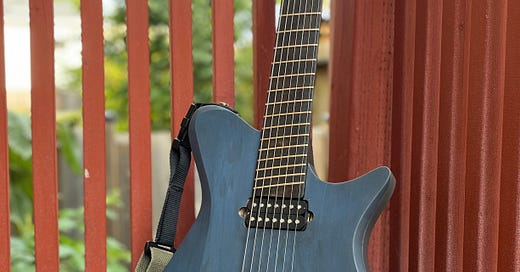


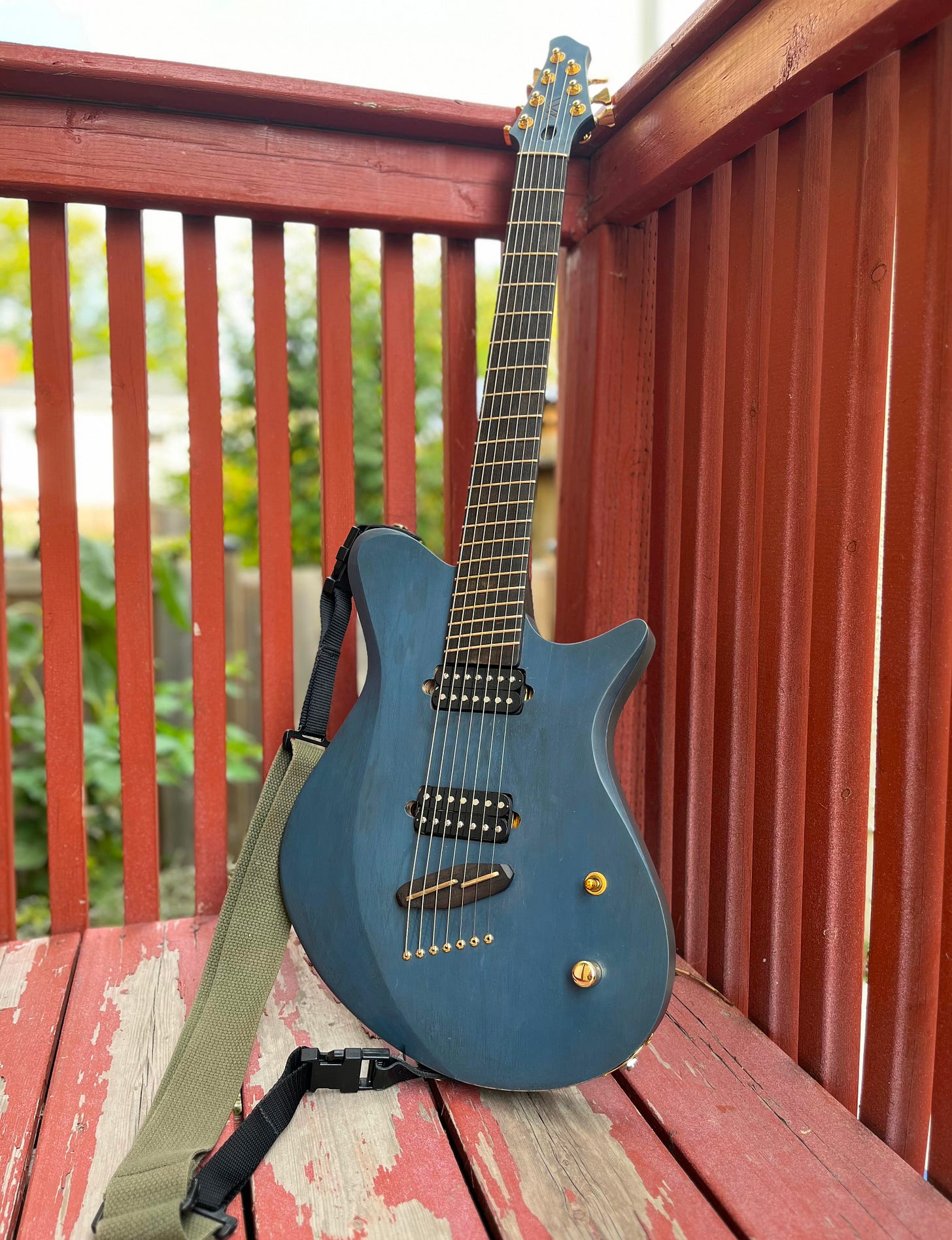

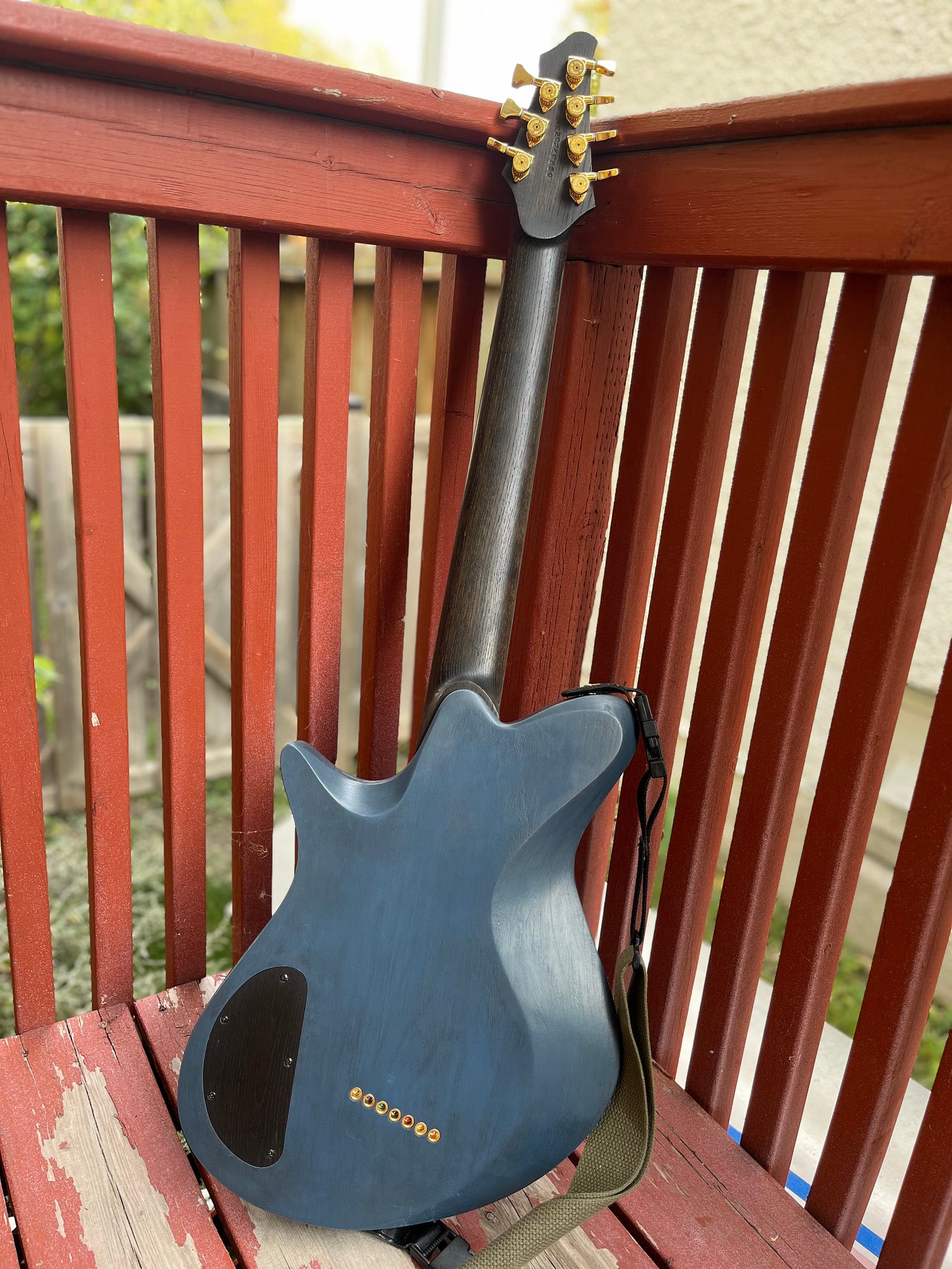
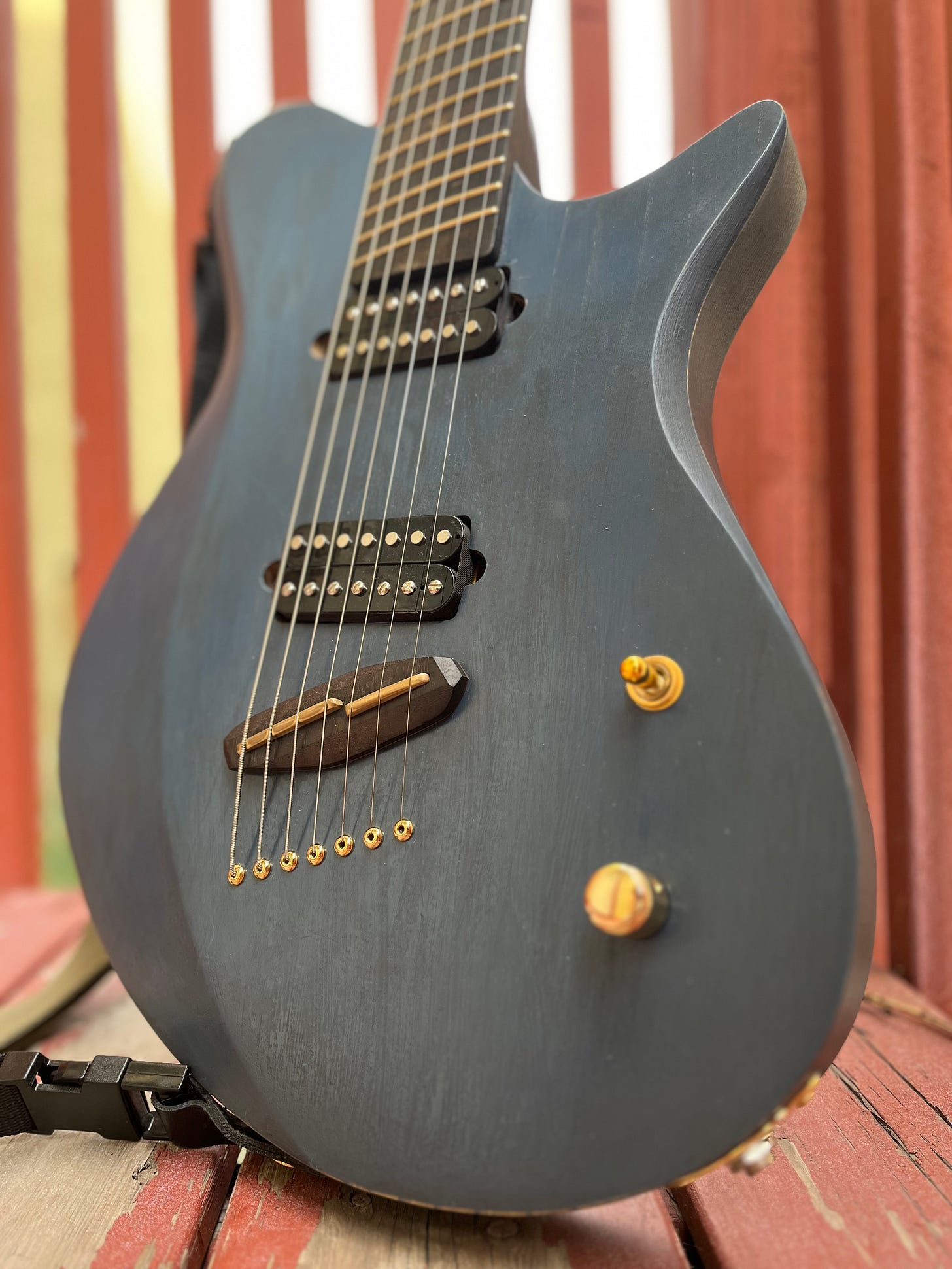
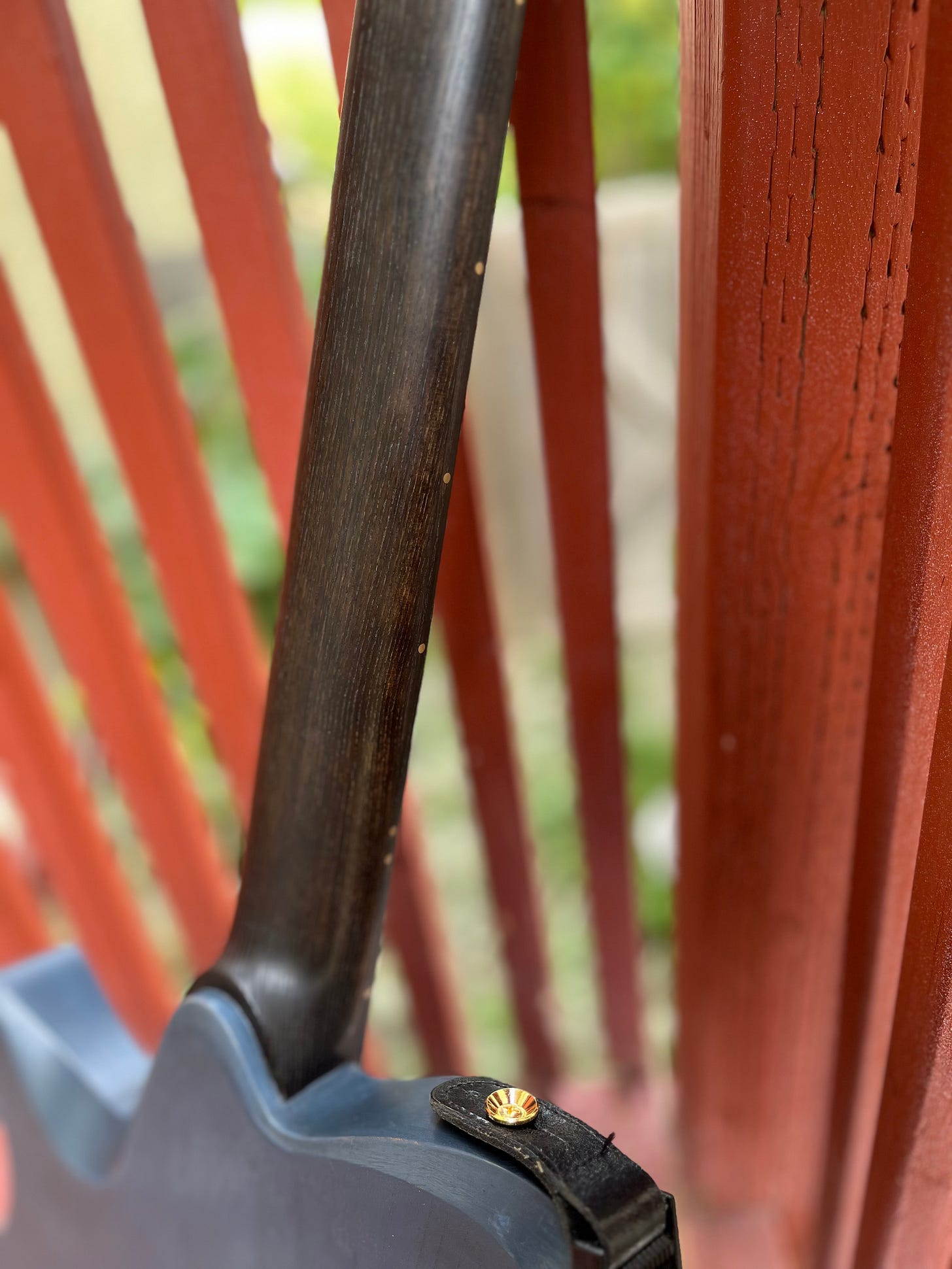
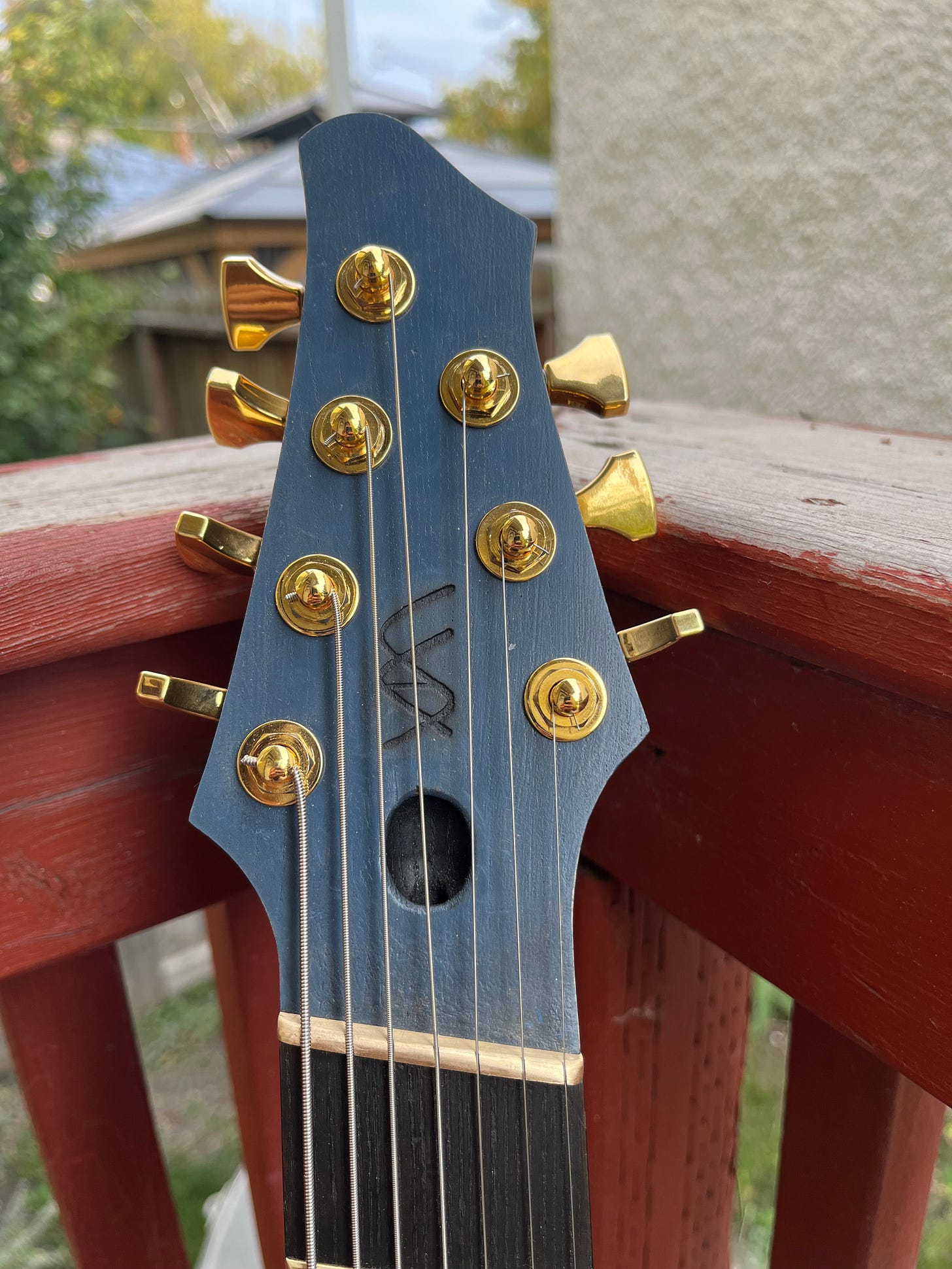
It's always cool seeing your take on instruments. The colour and staining choice turned out great, if you ask me. Also, your neck pock/heel joint design is just awesome and looks comfortable.
How's the intonation with your floating bridge design?
Whoa, this is next level. This is my favorite one you've made so far.